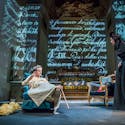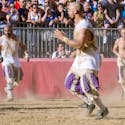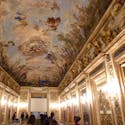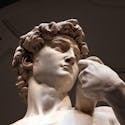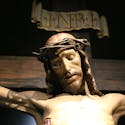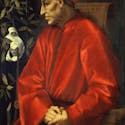This is a chronology of the major events that have played a part in shaping the Florence of today.
59 BC - Florence begins to grow as a Roman town
541-4 AD - Byzantine walls added to the Roman walls, as protection against the Ostrogoths. Walls also built in 9th, 11th, 12th, and 13th centuries.
570 - Tuscany is taken by the Lombards, who set up their administration in Pavia and Lucca
781 and 786 - Charlemagne, King of the Franks, visits Florence, which has become part of the Carolingian Empire (later the Holy Roman Empire) ruled by Margraves based in Lucca
1115 - death of the last Margrave, Matilda, followed by the formation of the first Comune (the city-state) in which Florence is run by a 100-strong assembly
1235 - the Florin is first minted in silver, and then in 1252, in gold; the Florin is used as a standard coin in Europe, there is evidence of the pre-eminence of Florence in European finance
1250-60 - the Primo Popolo regime is dominated by the trade guilds
1265 - birth of Dante Alighieri in Florence
1296 - construction of the Duomo, Florence's cathedral, is begun under Arnolfo di Cambio
1302 - Dante is exiled by Charles of Valois
1340s - economic crisis, due in part to the bankruptcy of the Peruzzi and Bardi family bankers by Edward III of England and also partly to the Black Death (plague), after which the population of Florence is reduced by half
1378 - uprising of the Ciompi (wood carders), high point of labor unrest
1406 - Florence captures Pisa, gaining direct access to the sea
1458 - Cosimo de' Medici recognized as ruler of Florence
1469 - birth of Machiavelli
1469-92 - rule of Lorenzo the Magnificent, artistic highpoint
1475 - birth of Michelangelo
1478 - Pazzi conspirators scheme to have Giuliano and Lorenzo de' Medici murdered in the cathedral. Giuliano is killed but Lorenzo escapes by hiding in the sacristy
1494 - surrender of Florence to Charles VIII of France at Sarzana
1498 - Savonarola burned at the stake in Piazza della Signoria after four years of rule
1502 - Republic of Florence retakes Pisa
1570 - Cosimo I creates Tuscan state free from Pope and Holy Roman Empire
1743 - death of Anna Maria Luisa, last of the Medici, the Medici inheritance is bequeathed to Florence and becomes the basis of the Uffizi Gallery collection. Florence is then ruled by the house of Lorraine under Francis Stephen, who becomes Emperor I of Austria.
1799-1814 - Tuscany is occupied by Napoleon's troops
1865-1870 - Florence is made capital of the newly united Kingdom of Italy. King Vittorio Emmanuele is installed in Palazzo Pitti
1944 - on August 4, Germans blow up all the bridges in Florence except Ponte Vecchio
1966 - on November 4, the Arno River bursts its banks and Florence is flooded
1993 - bombing of the Uffizi Gallery
